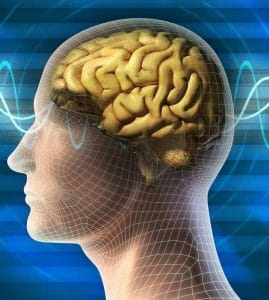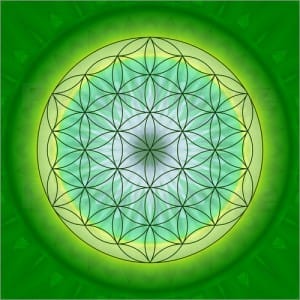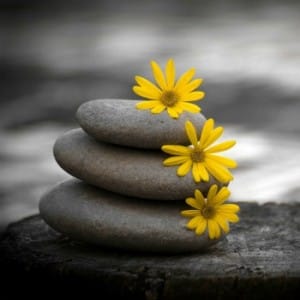Although you are considered one of the greatest authorities on holistic health, you are best known for your book “From the diary of a modern-day millionaire … or the wealth is within us”. In professional circles, you are particularly respected as a top expert on Gerson Therapy (GT).
Yes, the book was part of my business career, which was more exposed in the media at the time. Today I live differently. After the experience of a serious illness – which is when I learned GT – I realised what my true path in life is and what truly makes me happy and fulfilled.
Today, I choose my projects and business partners carefully and work only within a small family business. My main focus is on holistic health.
So the disease has changed you radically. Did you also find a specific factor that led you to this experience?

The ancient sages said that there are only two forces: love and fear and their variations. Today, science proves that the vast majority of diseases are psychosomatic in origin. A figure of between 90% and 95% is even quoted.
This means that stress, in its many forms, weakens the immune system, damaging the body so much that it can no longer maintain its normal processes of repair and growth. Cells literally shut down. I believe that a similar thing has happened to me. The cause that led me to illness was a specific way of thinking and acting.
Dr Bruce Lipton, a world-renowned researcher and former Stanford University lecturer, said that each gene can be expressed in as many as 30,000 different ways. This means that we are not victims of genetics, but that a gene is only activated in very specific situations.
They are linked to our world view, which is a revolutionary finding. A new science called epigenetics – epi means above; like the epicentre of a volcanic eruption – is proving that there is a mechanism that determines the activation of genes.
So it’s not so much about the conditions we live in, but our view of them. This is great news for anyone born into a family with a history of serious or chronic illness, because we now know that each individual has the greatest influence on the development of disease. Looking more broadly, it could even be said that illness is a helper on the road to healing family beliefs …
Very interesting. Can you tell us more? Perhaps give an example?

The key point is that we don’t have to worry so much about whether we inherit “time bombs” in the form of “crazy genes” that are just waiting to be activated. That’s what old science teaches.
Epigenetics reminds us to pay particular attention to family beliefs. These determine whether we will be affected by a disease. Dr Lipton, who has already been mentioned, likes to tell us a very interesting family dynamic.
Take a family with a history of cancer adopting a child from a family with no history of the disease. The adopted child therefore has a completely different genetic make-up to the rest of the family. But statistics have shown that he or she has exactly the same chance of contracting the disease as the blood child of his or her new parents.
How have your family beliefs influenced you? Perhaps you also know which beliefs they were?
My main belief was related to the fear of survival, because I grew up in a poor family. I developed a unique mechanism of thinking and acting that, while it allowed me to find my way in every situation, at the same time it sometimes pushed me over the edge.
I tried to make a good impression everywhere I went, so sometimes I wanted to show myself in a different, better light. I also liked to “be right” or to seek approval from those around me in this way, because I had a very low self-image.
For the same reason, I became active in sports – athletics and martial arts – and later in body building (bodybuilding). I developed a very striking physique, but at the same time I developed a strong will, discipline and determination. This boosted my self-confidence and I ended up at the other extreme – now everything was going well and I started to look down on others. And it didn’t end there. At the same time, my perfectionism was also on the rise. I wanted to be the best in all areas.
When you combine this mental strength and masculine demeanour with deep-seated fear and overconfidence, you can easily manipulate people. Of course, I have always had an answer or a justification for why I do it. My favourite was: “People have always chosen to follow me, I have never forced them to do anything.”
Today I see that I was able to draw the ends and convince people of what I strongly believed in. Some people still call it excellent negotiating skills. I call it cancer.
I also see this disease from a symbolic point of view. Sick cells that have a certain capacity or power expand or take over a place that does not belong to them. Or, rather, they take the opportunity to exert their influence in weak places. This is exactly what I did… The illness was just a messenger that brought me a message or opened my eyes to what I was doing.
But this is only the first stage – disclosure. Then begins the very difficult process of letting go of strong, often unconscious patterns.
So the disease has come to reveal what is happening in other areas?

Everything is connected. Not only does the body reveal inner thoughts and feelings through symptoms, but it also reflects our view of the world. More and more scientists and researchers are repeating that the mind’s job is to create coherence between the inner state and the world view.
So our inner state is only a reflection of the world as we see it. And then there is the highest level, which is related to our mission in life. Sometimes illness serves as a stimulus for us to turn inward and awaken and express what is our highest potential.
That’s why it’ s crucial to recognise the signs – whether the disease is crying out for change, or whether we need to stop resisting it, accept it and live with it.
So can the task of illness be simply to accept it?
Of course. In the book “The Big Ugly Crisis“, Nikola (Grubiša) and I describe a story told by Paul Solomon. He describes the case of an American couple who had a baby girl with a brain defect.
She didn’t walk and she didn’t talk. Until then, her parents had lived the typical American dream – high social status, glamour, material possessions… When their child was born, their world fell apart and they started looking for help. First to doctors when they could no longer help them, and then to various healers.
That’s how they started to realise that it’s not all about parties and socialising. Eventually they came to Solomon, who revealed that the little girl had come to heal them – to stop seeing her as something “defective” and to embrace her with all their love and care as a complete being. So they should not try to fit their daughter into their own habits of life, but the other way around. When they decided to take this step, within a day their daughter was up and speaking her first word …
Is there any criterion or guideline for when to resist or try to cure a disease and when to just accept it?

There is. We can follow the definition of health and then work out which level applies to us. At a basic level, health means the absence of symptoms of disease at a physical level. At a higher level, health is seen as a state of general contentment, where we are not only interested in the absence of symptoms on the body, but also in the “health” of the emotions, thoughts and spirit.
Here we seek harmony in all the important areas: satisfaction with the body, orderly relationships (with ourselves and with others) and satisfaction with our material situation. At the highest level, we are no longer seeking optimal conditions or circumstances that make us happy – i.e. a body without symptoms of disease – but rather we are using an imperfect state of health to see what is happening to our life energy.
The body, relationships and finances become a map that reveals the disharmony within us. Therefore, we have neither the desire nor the need to “fix” anything, because there is nothing wrong. Instead, we accept the circumstances with gratitude, unconditionally, and it is the cessation of resistance or acceptance that sets us free and often heals us physically; just as it did with this little girl.
If we can listen to our body, or look at ourselves in a neutral and broader way, this look alone can tell us where we are, or what we need to do.
Could you then say that you needed this medical experience?
Of course. The experience has radically changed me, strengthened me and basically put me on the right track in life. This does not mean that I did not take care of myself before – quite the opposite. I have lived a fairly healthy and active life. I was an active sportsman, I never drank, smoked or took pills.
I travelled a lot with my family, I paid attention to my diet and I regularly engaged in personal growth.
I had a fairly high level of awareness and I was seeking balance and harmony on all levels. But these were activities on a conscious level. Given that – according to Dr Lipton – unconscious programmes run our lives 95% of the time , and that these programmes are a million times more powerful than conscious efforts, of course these patterns of belief and behaviour are much more important….
Mental games in the form of manipulation of people were also part of these programmes, as I had no perception of my functioning in this way.
Did you have such a mature view of the experience when you became ill?
No, at that time I saw the disease more as an obstacle that I had to overcome as soon as possible so that I could get back to my old self. I approached the matter accordingly – I was looking for a treatment method that would take the least time and energy and that would allow me to maintain my old lifestyle as much as possible.
So I have not listened to the message of the disease. I still had the same aspirations and goals in life and I had no intention of changing anything in my life, and I saw my illness as just another challenge. Similar to a business project, for example.
When did you realise and change the way you look at your illness or yourself?

After my first cancer diagnosis, I got another, much worse one. My surgeon looked me in the eye and told me it was no longer a joke. That some people only live for half a year. That sobered me up. Over time, it became clear to me that the purpose of a life-threatening disease is deeper than that.
I realised that the solution was not going to be that simple and that I would have to put more energy or focus into it. I tried almost all the methods that made sense to me, but none of them worked.
Of course, I have approached them superficially, only on a physical level. In fact, I resisted change for three years – all the time looking for something “next door” to cure me. As the disease progressed from the skin to the inside of the body, my view of the disease as a challenge changed.
I was filled with a deep fear. I was at a crossroads, and I had only two choices: either I let go of most of the things I had been holding on to and build a new life on a new foundation, or I would be gone. Someone would have to die – either the “old me” or the complete me.
In short, if I wanted to survive, I had to radically change the way I think, feel, behave and act. When I look back on the experience today, I see that it was the only way to change.
Whatever else happened to me – for example, if I had a crisis in my relationships or finances – I would not have abandoned my life then, but on the contrary, I would have buried myself even more in my work.
What has been the most difficult part of the treatment or this change?
Change the goals and vision. The real healing started when I was ready to look at things realistically, let go of certain things and accept that nothing would be the same again.
Until then, I had built on my past achievements to build my career – after all, my friend Nikola and I had a great knowledge and a “dowry” that we wanted to give to people. We had an international bestselling book, highly regarded by American businessmen and blessed by one of the greatest sages and spiritual masters, Sai Baba.
People literally worshipped me; I gave lectures to thousands of people abroad, I appeared regularly in the media, businessmen sought my advice… It was very hard to say goodbye to these goals. But when I let them go, a turning point began. I decided to bury everything I had built on and start again.
How did you go about your treatment?
I chose Gerson Therapy (GT) as the basic technique. The key reason for choosing this particular technique was my faith, or some kind of inner trust in the protocol. I approached the treatment gradually, but with enthusiasm and consistency.
I followed a natural diet with freshly squeezed organic juices and coffee enemas. I drank thirteen freshly squeezed organic juices a day, exactly as prescribed. I also ate the other recommended foods and had five organic coffee enemas a day, every 4 hours. (I made very good use of this time, though, because during the enemas – about five times for about 20 minutes each – I listened to audio recordings of healers and various spiritual masters. In this way I was dealing with the energy of health, wisdom, optimism…, not with the illness.)
This is key – the protocol must be implemented to the letter. If you add “a little bit of this and that” or tweak the implementation, it will have no effect. However, this is only a superficial description of how it works on the physical level – the real healing took place inside me …
What was going on inside you when GT was implemented?
Before doing GT, I went through a very important phase of “unplugging”, or untangling myself from old patterns. It was not easy. I remember an example from the beginning when I was already having strong healing reactions and I was still forcing myself to go to meetings. A colleague came looking for me in her car to take me to a meeting. I was so much in the process that I couldn’t even speak. But I still stubbornly persevered and somehow got through the meeting. I wanted to maintain the old patterns in any way I could, and I certainly did not want to hear the message. Well, I got the message anyway and slowly calmed down. If I had continued in a similar rhythm and thinking, I would certainly not be alive today.
Namely, I would still be thinking hard about achieving the old goals while the procedures are being carried out. Fortunately, I then turned inwards and started to get in touch with a deeper part of myself. I meditated every day, using different techniques. As I spent hours on myself, I spent less time and energy thinking about the business. So the strong desire for the old goals slowly faded.
It was this phase that allowed me to make my breakthrough later on, as I started GT “empty-headed”, but with great confidence in it and a desire to survive.
So I opened myself completely to the new life, embraced it and allowed it to “occupy” me on all levels. When you grasp onto something new with all your might, the old automatically weakens and falls away.
For me, it was crucial to choose a method of treatment that did not allow me to adopt the old way of thinking and acting. GT was very suitable, as I practiced the protocol practically from morning till evening.
Once you realise that it’s pointless to think about meetings, projects, business partners and the like – because even if you had the chance, you wouldn’t have the time to do it – change begins. First the schedule, then the goals and vision.
I did the whole protocol for two years and every day I was less and less the “old Boris” and more and more the “new Boris”. I let go of big aspirations and goals and focused on the more important things I had in front of me – I was living. Deep down I realised how as a businessman I had often been bothering about trifles without meaning, how much family and genuine contact really meant to me, how precious every moment was, and so on.
Basically, I spent the whole day developing a sense of gratitude towards life, family and new opportunities. Even when I was resting, when I was not doing the protocol, I was consciously cultivating these thoughts and feelings, “detoxifying” my mind and emotions and “feeding” them with the energy of gratitude, of joyful anticipation of healing and the beautiful moments that lie ahead.
I remember the first time I really gave up thinking about my old goals. At that time, I already had a strong appreciation for natural nutrition and ecology. I said to myself: ‘If life wants me to be a gardener, I will garden for the rest of my days. Everything is a gift, I accept everything! With the alternative – that I am no more – even tending the garden sounds like the ultimate reward…” And I really thought so … It was a clear sign that I had moved on.
Does everyone who undertakes treatment with a similar method go through this process?
No, not at all. For example, I could hire an assistant to prepare my juices and food so I have time for other things in between. I could still organise a meeting; at home, for example. But we did it all just in the family circle, with a lot of focus on consistency in the process.
The key is the decision that comes from the desire to change. The method – in my case GT – is just a handy aid to help with the process itself, to make the temptations less. You have to let the new circumstances take you over so much that the old patterns fall away.
Moreover, it is crucial to see the implementation of the method, or the whole situation, as a gift, an opportunity for a new birth. If we implement the method with a constant discontent, a rejection of the new circumstances and a longing for the old, I do not believe that it will work.
I could also resist change and complain. But in that case, healing would not happen on a spiritual, emotional and mental level.
What conclusions about yourself and your health have you come to in the course of your treatment?

I realised some things that I knew from theory but had not lived. For example, that the responsibility for my health is completely and solely in my hands. It also showed a strong need for clear decision, discipline and focus. I cannot do without that, not even in my treatment.
I also realised that having a strong vision and a desire to live is the key. My inspiration was to see the children grow up. Because I had a reason to live, I had the will and the strength to do whatever was necessary.
I have also learned many things about myself and many loving things about my family that have come to the surface. We had spent a lot of time together before. But because my mind was on business projects most of the time, we didn’t have a deeper goal in common that would have brought us together.
But my illness actually united us in purpose and we each accepted our role. I got the support that cannot be bought or got anywhere. The family came alive in a special harmony; like musical virtuosos playing together for the first time a tune they didn’t know could sound so good.
It was, of course, quite difficult from the beginning. But over time, we have accepted the new tasks as part of life. Nobody was ever at a loss and nobody resisted the tasks. Even the two children, who were in their teens, gradually accepted the new situation with responsibility and maturity. Recovery was essentially a process of purification, leading to a re-evaluation of goals and priorities in life.
It is probably the hardest thing for people to let go of the old and embrace the new. What was the main initiation for you to let go of the old?

Many of us find it very difficult to let go of the old until something new comes along. The ego seeks to preserve what is. Or, as the saying goes, we do not throw away the old hat until we buy a new one.
Basically, we have two options. Either we trust completely that in the void, when the old is gone, something new will be born, or we map out a new, different life in advance. This must be based on a more honest view of ourselves and the world, or take into account the true nature of the individual, regardless of the material and other goods on which we have built up to now.
For me, the two happened in a kind of parallel way. First, my world was shattered and I didn’t know where the experience was taking me. That’s when it’s key to let go of all expectations and just trust. At the same time, I had a hunch that something new was waiting for me.
Then my attitudes and outlook on life started to change. I realised that success is not about a lot of money, but about a lot of genuine joy. Wealth is not a luxurious villa and a prestigious car, but a family that is there for you and that you can always count on.
Glory seeks approval and validation among people, and you only reach a state of deep fulfilment when you find it within yourself. In between, I also went through a phase when my life was hanging by a thread and I had to surrender completely. The mind, which was literally “scared to death”, retreated – and the soul showed itself.
It was a part of me that I had not known until then. I saw that in my muscular, strong body there was a gentle soul, completely different from the pervasive, “macho” self I had been living through. I realised with how much ego-energy I had imbued my tissue and how I was able to tackle almost all things with my marked emergence and determination.
Can you single out the key moment that tipped the balance of the old decisions in favour of the “new Boris”?
At one of the moments when it was the worst – I couldn’t sleep and I didn’t even have the energy to talk, let alone move – I felt that everything was perfect. There are no coincidences, no “mistakes” and everything is going in the right direction.
I was reassured by this profound realisation. It was a crucial moment when the soul began to heal and the body needed a few more years. In fact, I knew then that I would be healed, I just had to continue to be diligent or do things according to the programme.
So it was not only the GT that made you happy, but also – or mainly – your implementation of this method?

I firmly believe in it. The key is the combination or synergy of all levels. GT is great for physical detoxification and for cellular nourishment. However, at the time of Max Gerson, science had not yet placed so much emphasis on the psychosomatic causes of disease, so Dr Gerson was not able to include them in the protocol.
In addition, one of the key factors that tipped the balance in my favourwas my boundless faith in the method. I checked the facts and decided that this was my way to the solution. GT was my starting point that forced me to change my lifestyle.
But I also know of people who have not been helped – I believe because it was done mainly on a physical level. If you accept therapy as a detour to known, previously set goals, it will not be successful.
When you embrace GT as a new lifestyle to live – not as a method to do alongside your established life – and fully embrace the new ways, change happens. And that is healing. Let’s not forget that about 90% of illness is said to originate in the mind and emotions; therefore, healing must also start and happen there first and foremost.
So I can say that GT has paved the way for me to have a complete healing process on all levels and has definitely allowed me to detoxify and nourish my physical tissue.
Could you say that you have in some way upgraded the GT protocol itself?
That’s right. It was only later that I saw that I had added many things to Dr Gerson’s basic guidelines that otherwise belonged to the area of spiritual growth. And this combination has proved to be excellent for other people as well.
What’s more, when people ask me for advice on how to do GT, I suggest a special method called “Body Reset“. It is a much simpler approach that does not take as much time, but involves healing at all levels.
This method has cured people of multiple sclerosis, high blood pressure, chronic headaches, emotional problems, high blood sugar and cholesterol, digestion and so on. This part, which is not covered by GT itself, is presented in the book “The Big Ugly Crisis.”
The book starts where health books usually end – with statistics and explanations of the different healing techniques that are supposed to have the best effects in practice. Of course, the point is not the technique, but the right approach and a change in the way we look at ourselves, others and the world. In essence, the book is a guide to crisis in all areas, or rather, what to do when you find yourself at an important turning point in your life.
If you look back on those times today – do you see them as a calvary or as a learning experience? Are you crushed at heart or are you grateful for them?
It was not easy, but it was necessary. At the time, I was not wise enough to see where my boat was going and automatically change course. It was illness that pushed me to change. If I had not done that, I believe I would no longer be here.
As I said, I resisted the experience for a very long time and it didn’t bother me much at the time. When I realised that the world was collapsing under my feet, it was very exhausting. Also because of the intense fear that I was experiencing. But at the same time, I knew somewhere inside me that this was the path I had to walk and that it was essentially a gift or an opportunity to start again.
This realisation made me feel grateful , and many times tears flowed as I realised that I would survive. If I were to face a similar challenge again, it would be easier because I would have the faith that comes from a successful experience.
In fact, I could divide the whole process into two parts: the time of the experience, when I was looking for the way and I didn’t believe, and the events after the moment when I realised that everything was perfect and that everything would happen the way it had to happen.
What is your message to all those who want to get well or stay well?
The most important lesson for me was that serious illness is not just a side issue that you tackle with your left hand or deal with casually. I realised that no technique or therapy would cure me, because the illness did not come from the physical plane.
The body is the map on which action on other levels is expressed. When you get a message like this, you have to be able to read it; and the message is always a call for change. The key to healing itself is to choose a tangible therapy or technique in which we believe implicitly.
This is how we get faith, strength, hope and energy. At the same time, our fears fade, and we stop hysterically searching for the best technique. When we decide on a method, we need to find in it the focus and discipline to carry it out, which is the result of a belief in healing and a strong desire to live. (If we don’t have boundless faith in a technique, we channel part of our energy into research, endless searching, and thinking “What if there is an even better technique …”. And that part of the energy is not available for healing.)
As the process unfolds, we need to allow all the activities to absorb us, because only then can we let go or let go of old patterns – which is the key purpose. That is when the opportunity for growth comes: we have to let go of what is not serving us and rebuild things.
With the same trust and faith that we have embraced the healing method, we need to embrace a new life, new goals and new priorities. This is the only way to ultimate liberation. As an outsider, you have to observe yourself and allow life to happen, rather than trying to force circumstances.
Will you stay on this new path of helping others to find themselves? Do you have any other projects in mind?
I think I will stick to my path, which is health-related, but in a broader sense. I have always believed that my primary field is entrepreneurship, and the field is not even important. Some time ago, my wife Mojca – who studies astrology at a renowned international institute – realised from my data that my life is actually intertwined with the health field and that, one way or another, I would have to build my goals around this field.
I accepted this information with gratitude and set myself a new path in this direction. I am enjoying it, but I am aware that it is primarily because I have gratefully accepted the gift of a new life. Now everything is easier.
Even the fear that sometimes creeps into my mind is only a pale reflection of the primal, ingrained fear of death that I have gazed into his eyes. That is why I feel more and more liberated and my main goal is to surrender and surrender to Life even more. Of course, I also carry out projects, but they are health-related, one way or another …
A final thought?

Everyone must realise that their health is entirely in their own hands. It may sound very clichéd, but I speak from experience – take care of your health while you are healthy. Too often we wait for traumatic experiences to turn inwards and re-evaluate our habits and beliefs.
Let’s ask ourselves what we would change if we were faced with a more serious health challenge. How can we live more authentically? How can we express ourselves through the qualities and talents that fulfil us? How can we find more happiness within ourselves and less through specific circumstances? How can we stop judging ourselves and others and look less critically at the course of events? Can we be more relaxed and trusting about life?
These and similar questions are in place when we decide to take responsibility for ourselves. Not just in health, but in general. Health, or physical condition, is only one area, but it may already be a consequence.
If we live healthily in thought, word and deed, we are unlikely to need the symptoms of illness. So let’s heal our thoughts and emotions and life will be easier, more joyful and more fulfilled. In addition, we eliminate the fear of illness. Some of it through preventive activities, but most of it through ensuring that we get the best care if we do get sick.
For example, people take out health insurance not only to ensure they get the best treatment, but also so they can get a good night’s sleep today. Reducing stress, a key factor in the development of the disease, is extremely important. But also to love ourselves, to act for the long-term good, and not to give in to the appetites of the moment.
